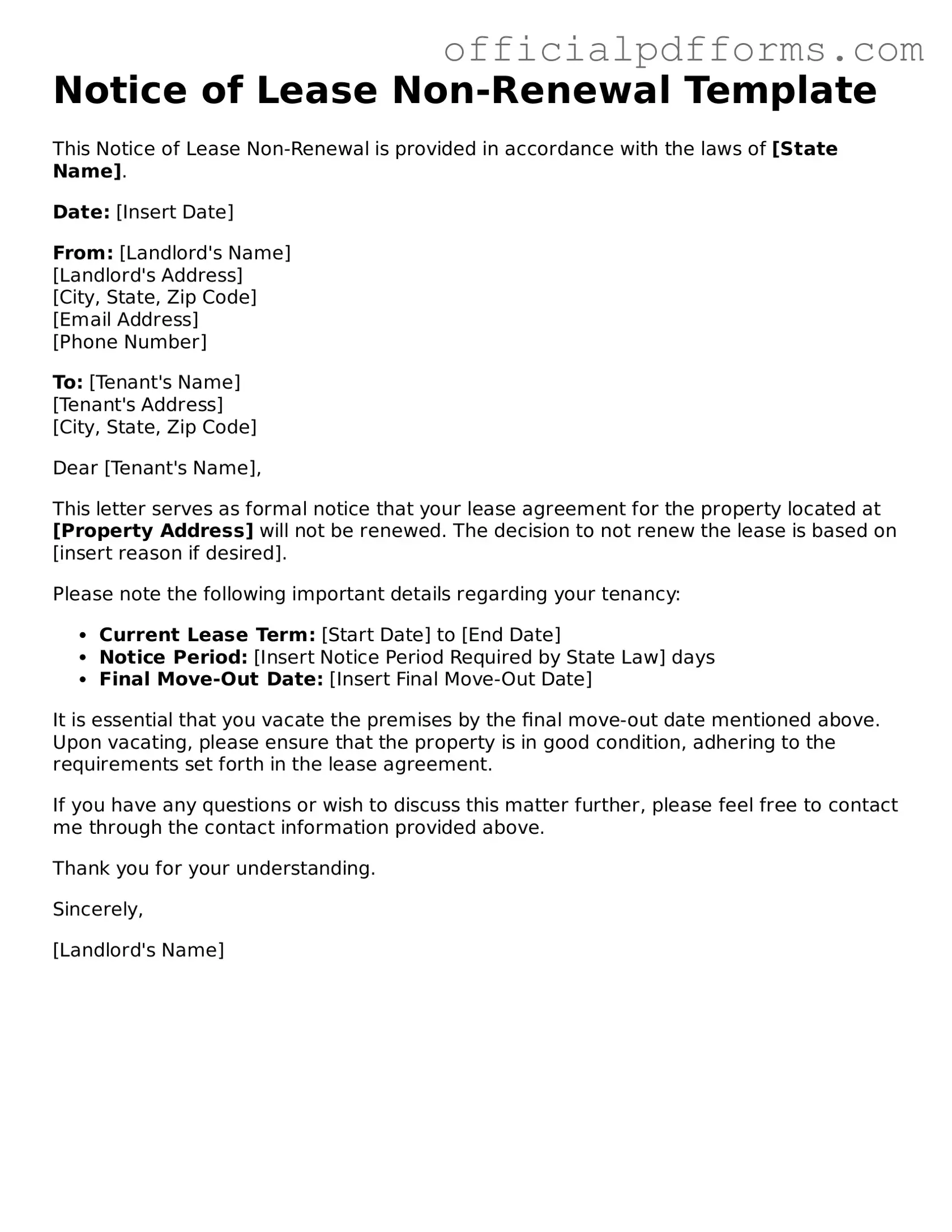Valid Notice of Lease Non-Renewal Document
The Notice of Lease Non-Renewal form is a document used by landlords to inform tenants that their lease will not be extended beyond its current term. This form serves as an official notification, allowing both parties to prepare for the transition. Understanding this form is essential for both landlords and tenants to ensure a smooth conclusion to the lease agreement.
If you need to fill out the Notice of Lease Non-Renewal form, please click the button below.
Access Form Online
